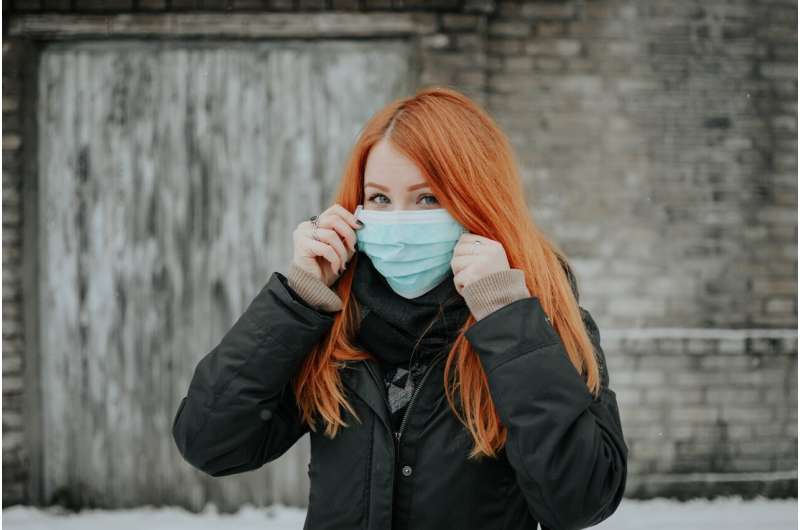
Australia’s coveted status as a haven from the pandemic could be at an end, with experts warning that a sustained Delta outbreak makes a return to “COVID zero” unlikely.
After long stretches with zero local cases—what Australians once jokingly referred to as “doughnut days”—a Sydney outbreak has now grown to 4,610.
Record numbers of new cases are being reported each day despite widespread lockdowns.
Slowly but surely, some local authorities have shifted to talking about containing the virus rather than beating it.
“Given where numbers are, given the experience of Delta overseas, we now have to live with Delta one way or another, and that is pretty obvious,” said New South Wales Premier Gladys Berejiklian.
After 18 months of advocating “COVID zero”, that represents a step-change in the country’s approach.
For experts like Emma McBryde, an infectious diseases and statistical modelling expert at James Cook University, the shift in tone is a reflection of the new reality that Delta has brought.
“We’re buying time, not getting back to COVID zero,” she told AFP.
Like most experts she agrees that Australia’s old virus toolbox—aggressive tracing and testing, snap lockdowns and extensive travel restrictions—while less effective, is still essential to stop exponential virus spread.
But, she said: “The goal now should be keeping COVID in check for long enough to get vaccinated.”
Tony Blakely, an epidemiologist at the University of Melbourne, echoed those comments, telling public broadcaster ABC that Australia will “probably never” get back to zero transmission.
Game changer
Barring a few isolated Pacific islands and neighbouring New Zealand, few countries weathered the first 18 months of the coronavirus quite as well as Australia.
As the rest of the world hunkered down, got sick and lost loved ones, Australians flocked to bars, restaurants and the beach.
Occasionally, the virus jumped from hotel quarantine facilities into the community but aggressive tracing and testing, snap local lockdowns and domestic travel restrictions kept it in check.
Then came Delta.
In mid-June, a US flight crew infected a Sydney driver with the highly transmissible variant first detected in India.
Since then, the number of daily infections has climbed steadily despite a Sydney lockdown, now in its sixth week.
The outbreak has grown and clusters have popped up across the country.
Roughly 16 million Australians—almost two-thirds of the population—are now staying at home, just as Europe and North America emerge from virus-enforced hibernation.
Bun fight
The outbreak and strategy shift by New South Wales has spurred recriminations among Australian states and the federal government in Canberra.
Leaders have bickered about whether Sydney locked down too slowly, or too lightly.
Authorities in Victoria, Western Australia, South Australia and Queensland continue to try to stamp out new cases entirely.
But even those who advocate aggressive suppression admit the costs are rising and it has become harder.
“Australia’s ‘Zero COVID’ strategy has allowed us to escape the worst of the pandemic so far: our death toll has been among the world’s lowest, our recession among the shortest,” said a recent report from the Grattan Institute, a public policy think tank.
“We’ve faced fewer restrictions on our daily lives than almost anywhere else. But we have paid a heavy price. We are shut off from the rest of the world, and we have frequently been locked down.”
“The more infectious Delta variant is making Zero COVID even harder to maintain. Australians have supported a hard-line approach, but they are also tired and frustrated.”
Despite the bickering, most mainstream voices are united in seeing vaccines as the ultimate way out.
But barely 20 percent of Australians are vaccinated, in part because of poor planning, in part bad luck.
The government bet on a University of Queensland vaccine that—while likely effective—was dropped because it caused a false positive HIV test in recipients.
It also bet on the AstraZeneca vaccine, which is produced locally and is in plentiful supply but is seen by many Australians as inferior to Pfizer, which was ordered in small numbers.
According to the Grattan Institute only 10 percent of Australians are “entrenched anti-vaxxers”.
For the rest, McBryde said the situation may have to get worse before they turn to AstraZeneca. “People are just unbelievably complacent,” she said.
Source: Read Full Article
